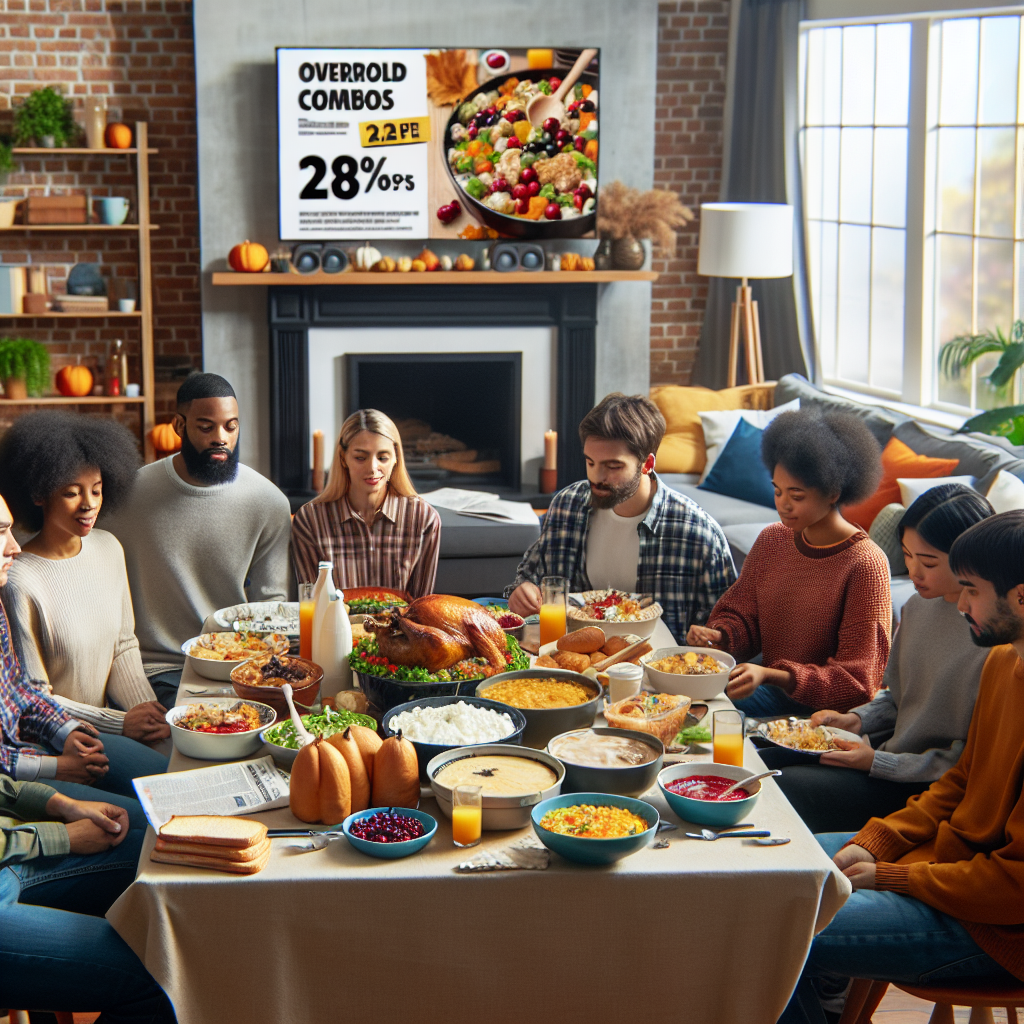Americans are celebrating Thanksgiving in a noticeably different way this year. Despite major retailers offering combo promotions with prices lower than previous years to reduce the cost of main dishes like turkey, overall grocery prices continue to rise. At the same time, there has been a significant increase in demand for dining out and takeout, presenting a vastly different consumer landscape for this year’s Thanksgiving.
CNN cited statistics from OpenTable, which gathered reservation data from over 60,000 restaurants across the United States and found a 13% increase in reservations for Thanksgiving day (November 27) compared to the same period last year.
This indicates that while dining out is typically more expensive than eating at home, the pressure of planning a full meal, along with rising grocery prices, has led many Americans to choose dining out.
The National Restaurant Association stated that the monthly increase in menu prices in September was the smallest since February 2024. This might make dining out more attractive to consumers, especially as some chain restaurants have introduced “prix fixe menu” deals.
“Prix fixe menus” allow customers to enjoy a set meal with various dishes including appetizers, main courses, and desserts at a fixed total price. The benefit of this type of menu is transparent pricing, often more cost-effective than ordering individual dishes, and allows customers to experience multiple courses in one sitting.
Data also shows a significant increase in the number of people ordering takeout meals. Some families may choose to order in bulk from their favorite restaurants and enjoy the meals at home.
The platform Olo, which provides food and catering services, informed CNN that the company saw a nearly 100% increase in orders this year compared to last year. Olo CEO Noah Glass told CNN that this is partly due to the high grocery prices. He believes that ordering takeout provides consumers with a perfect balance of “quality, convenience, and value.”
According to data from the Bureau of Labor Statistics (BLS), food prices saw a significant increase in August and September. However, economists attribute the main reason for the rise in food prices to supply chain disruptions.
Despite factors such as tariffs, labor shortages due to policies targeting illegal immigration, and extreme weather contributing to the increase in grocery prices, Bloomberg Economics analysis suggests that it is supply chain disruptions rather than President Trump’s tariff policies that are the primary driver of rising Thanksgiving meal prices.
Bloomberg points out that over three-quarters of this year’s food price increase comes from products with lower reliance on imports, primarily driven by beef and other meat prices.
Economists Nicole Gorton-Caratelli and Troy Durie wrote in a statement: “Tariffs are not the sole reason for the rise in grocery prices. They are also not the main cause of increased costs for Thanksgiving dinner this year.”
Overall, Bloomberg Economics estimates that the overall cost of Thanksgiving meals this year will moderately increase by 1.2% compared to last year.
However, retail prices for main holiday foods like turkey are showing different trends. The American Farm Bureau Federation (AFBF) noted that while wholesale turkey prices have slightly increased from last year, major retailers are offering combo promotions with prices lower than in previous years to attract consumers, leading to a decrease in actual retail turkey prices.
This year, a new round of competition has emerged among US retailers, including Walmart, Target, Aldi, and Amazon, all rolling out low-priced Thanksgiving meal offerings. Walmart’s meal package is 25% cheaper than last year, with the number of items reduced from 21 to 15, primarily featuring their private label “Great Value,” reflecting the industry’s adjustment of meal contents to maintain price competitiveness.

